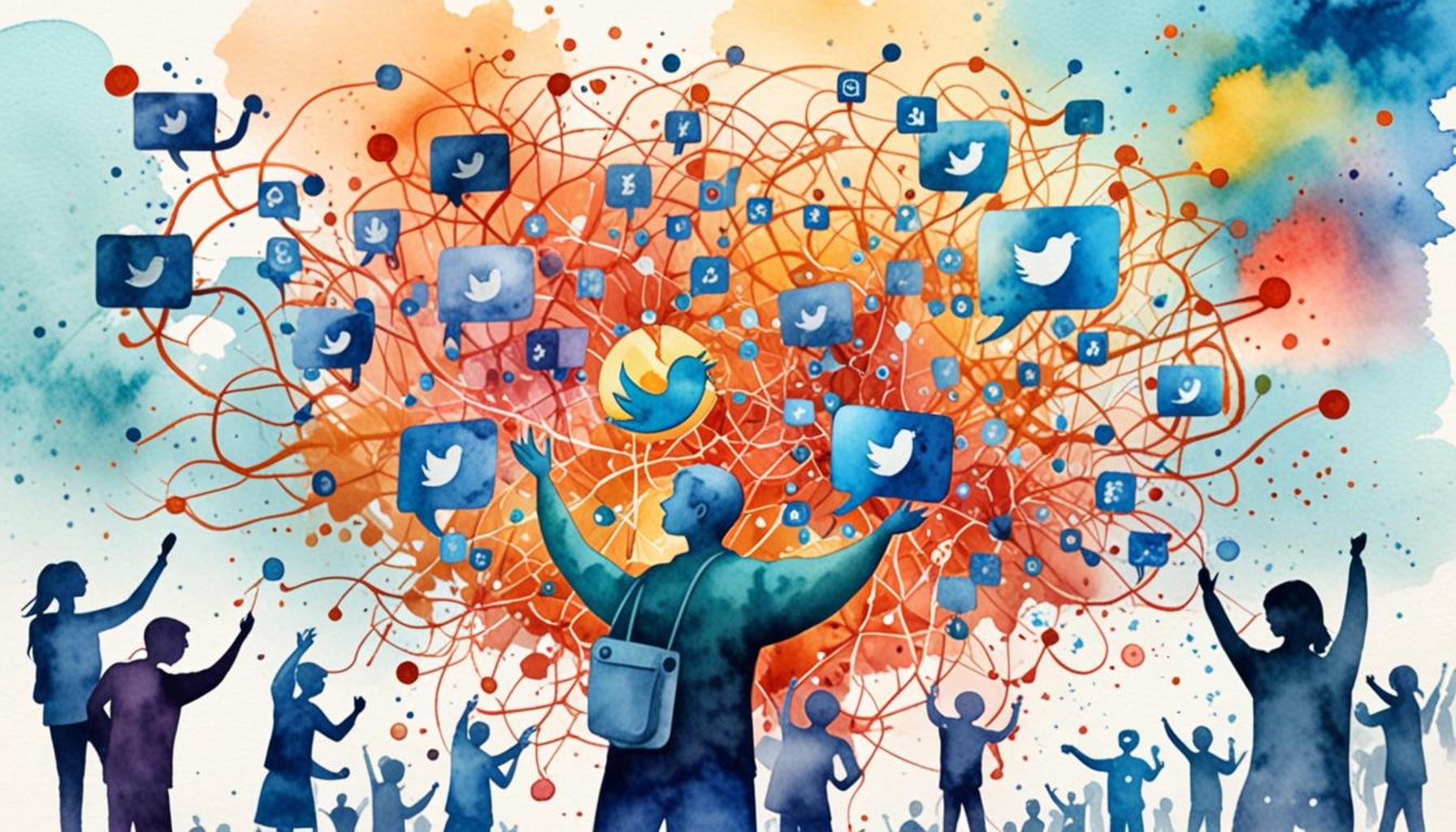How Social Media Can Increase Public Engagement in Promoting Government Benefits

Transforming Public Interaction in the Digital Sphere
In the modern landscape of communication, where digital connectivity permeates nearly every aspect of daily life, the role of social media as a catalyst for enhanced public engagement cannot be overstated. Platforms like Facebook, Twitter, and Instagram have become integral in bridging the gap between government agencies and citizens. These digital avenues are not merely platforms for conversation; they serve as powerful channels through which vital information about government benefits and services can be shared effectively.
A significant advantage of utilizing social media is its wider reach. For instance, a single Facebook post can potentially disseminate important information to thousands in mere minutes, engaging various demographics including younger audiences who predominantly use these platforms. This broad access ensures that government messages are not lost in the clutter of traditional outreach methods, allowing for comprehensive dissemination of crucial details regarding programs such as healthcare, education grants, and housing assistance.
Another critical benefit is the ability for real-time feedback. Citizens can respond instantly to government communications, voicing their concerns or asking questions. This interaction not only provides agencies with valuable insights into public sentiment but also encourages transparency. For example, during public health initiatives like vaccination campaigns, real-time feedback can help authorities address myths and concerns swiftly, ensuring better public compliance and trust.
Furthermore, these strategies often result in cost-effective campaigns. By leveraging organic posts and user engagement, agencies can significantly reduce the financial burden associated with traditional advertising methods. The ability to create engaging content without extensive budgets allows even smaller departments to promote important benefits successfully and reach those who may not be actively seeking information through conventional means.
Fostering Community Through Engagement
The importance of interactive content cannot be overlooked in fostering community participation. Polls, surveys, and quizzes are exceptional tools that invite public input on matters affecting them. For example, a local government might use a poll on Twitter to gauge public interest in different community programs, allowing leaders to prioritize initiatives that reflect constituents’ needs.
Additionally, incorporating visual storytelling within campaigns can significantly enhance public awareness. Complicated benefits can be effectively conveyed through videos and graphics. A poignant example is a series of short clips that showcase real-life experiences of citizens benefiting from government services, turning abstract policies into relatable stories that resonate on a personal level.
As public agencies increasingly recognize the importance of these digital tools, tapping into the dynamics of social media engagement is not merely an option—it has become a necessity. An informed public is more likely to engage meaningfully with government initiatives, leading to enhanced trust and active participation. As such, fostering this connection not only strengthens community ties but also ensures that invaluable resources are utilized, ultimately benefiting society at large.
RECOMMENDED: Check out this similar article
Harnessing the Power of Social Media for Effective Communication
In today’s digital age, leveraging social media for government outreach has emerged as a pivotal strategy to enhance public engagement, especially regarding government benefits. With over 70% of Americans using social media regularly, platforms such as Facebook, Twitter, and Instagram provide unparalleled opportunities to reach a diverse audience and communicate vital information regarding services available to the public.
A major component of this strategy is the potential for targeted communication. Government agencies can tailor their content based on specific demographics, from age and location to interests and social behaviors. For instance, a local government could create campaigns that specifically address the concerns of young families regarding childcare benefits or target older adults with information about Medicare and other senior services. By understanding the unique needs of different segments of the population, public officials can develop messaging that speaks directly to those who may benefit the most from government programs.
Another significant advantage is the engagement metrics that social media platforms provide. These metrics allow agencies to assess the effectiveness of their campaigns and adjust their approach in real-time. Metrics such as likes, shares, comments, and retweets serve as indicators of public interest and engagement. This data can guide future content creation and promote strategies that have proven successful in reaching and resonating with the constituents. For example, if a campaign highlighting student loan forgiveness garners more engagement than one focused on housing assistance, agencies can refine their messaging accordingly.
Moreover, social media’s capacity for storytelling cannot be underestimated. Human-interest stories tend to create a significant emotional impact, fostering a deeper connection between the government and citizens. By sharing testimonials from individuals who have successfully navigated the application processes for government benefits, agencies can demystify the programs and encourage others to apply. Visual content, such as infographics or short videos, can be particularly effective in illustrating how these benefits can make a tangible difference in people’s lives.
To fully harness social media for public engagement, government agencies should consider implementing the following strategies:
- Content Diversification: Use a mix of text, images, videos, and live sessions to cater to different audience preferences.
- Regular Updates: Keep information current to maintain public interest and awareness.
- Community Building: Create forums or groups where citizens can ask questions and exchange experiences about government benefits.
- Collaboration with Influencers: Partner with local influencers to reach broader audiences and legitimize government messaging.
As public administration navigates this digital landscape, the integration of robust social media strategies into outreach efforts is essential. Ensuring that citizens are informed about their entitlements not only fosters greater public trust but also promotes a participatory culture where community members feel empowered to utilize the resources available to them. Through effective communication, government agencies can enhance their public engagement efforts, resulting in improved awareness and participation in government benefit programs.
| Category | Description |
|---|---|
| Increased Visibility | Social media platforms serve as amplifiers, making government benefits more visible to a wider audience. |
| Enhanced Communication | They provide an effective way for government entities to communicate directly with citizens, addressing queries in real-time. |
| Community Building | Social platforms help in building communities around government initiatives, fostering discussions and advocacy. |
| User-Generated Content | Engagement through user-generated stories or testimonials can enhance credibility and relatability of government benefits. |
Engaging the public on social media about government benefits is not just a trend but a necessity. With over 3 billion users worldwide, platforms like Facebook, Twitter, and Instagram represent powerful tools for distributing information and engaging the citizenry. Government departments can leverage these tools to craft targeted campaigns that highlight the advantages of various programs, ensuring that messaging is tailored to specific demographics. Furthermore, the viral nature of social media means that impactful posts can reach exponentially more people through shares and likes. The ability to use multimedia such as videos and infographics enhances the overall appeal of these messages, making them more accessible to the public. A compelling approach to utilizing social media can therefore lead to a significant increase in public participation in governmental programs, ultimately benefiting community outcomes.
ADDITIONAL INSIGHTS: Expand your understanding here
Expanding Reach and Fostering Community Through Social Media Engagement
In addition to the targeted communication and engagement metrics that social media provides, another crucial aspect is the ability to create a sense of community. Social media platforms allow users to connect, share experiences, and support one another in a way that traditional outreach methods cannot replicate. This community-building element can significantly enhance public engagement in government benefit programs. When individuals see their peers discussing and advocating for certain benefits, it normalizes the conversation around accessing those resources and encourages others to do the same.
For example, Facebook Groups dedicated to discussions on public health insurance options or housing assistance not only serve as information hubs but also create a safe space for individuals to express their concerns, ask questions, and share success stories. In this environment, government agencies can participate as active members, providing timely and accurate information while addressing any misinformation that may arise. This direct interaction not only fosters trust in governmental institutions but also enhances the likelihood that individuals will turn to the resources available to them.
Furthermore, social media serves as a vital platform for event promotion. Governments can use these channels to announce workshops, informational meetings, and outreach events aimed at educating the public about available benefits. By utilizing popular platforms to create event pages, they can not only generate interest but also leverage features like reminders and RSVPs to increase attendance. For example, a local government in Michigan successfully increased attendance at workshops on unemployment benefits by using targeted Facebook ads to spread awareness to vulnerable communities during the pandemic.
Another innovative avenue for increasing public engagement is through social media contests and challenges. These activities can encourage users to share their own stories related to government benefits, creating a ripple effect of shared information and motivation. For instance, a state program could launch a “Share Your Story” campaign on Instagram with a specific hashtag, prompting individuals to post about their positive experiences with accessing benefits. Such initiatives not only raise awareness but also cultivate a sense of pride and community, as participants rally around shared experiences. Additionally, offering small incentives for participation, such as gift cards or local business discounts, can further boost engagement.
It is also imperative to acknowledge the role of social media influencers in raising awareness about government benefits. Collaborating with trusted figures who resonate with target demographics can amplify the reach of government messaging significantly. These influencers can share personal stories about their experience with government programs, approach topics in a relatable manner, and ultimately encourage their followers to engage with the services offered by the government. Research shows that consumers are 92% more likely to trust a recommendation made by an influencer than any traditional reference, making it a powerful avenue for outreach.
Finally, continuous feedback loops created by social media allow government agencies to refine their messages and understand the public’s needs better. Comments, direct messages, and polls are valuable feedback mechanisms through which officials can gauge the effectiveness of their outreach efforts. By implementing a cycle of receiving feedback, analyzing it, and adjusting communications accordingly, agencies can improve their engagement strategies, resulting in a more informed citizenry ready to take advantage of governmental benefits.
LEARN MORE: This related article may interest you
Conclusion: Unlocking the Power of Social Media for Public Engagement
In an era dominated by digital conversations, the potential of social media to enhance public engagement in promoting government benefits is profound. By leveraging platforms that have become integral to daily communication, government entities can reach wider audiences and ensure critical information about available programs is disseminated effectively. The community-building aspect of social media plays a pivotal role; it fosters an environment where individuals feel empowered to share experiences, ask questions, and collectively advocate for their needs. This increased camaraderie not only normalizes discussions around government assistance but also encourages diverse demographic groups to participate actively.
The use of targeted event promotion, interactive contests, and influential partnerships can further amplify engagement efforts. With creative campaigns that resonate with citizens, governments can transform passive recipients of information into active participants in their own advocacy. Furthermore, the ability to gather real-time feedback allows for a more responsive approach to public needs, facilitating a tailored communication strategy that evolves based on community input.
As agencies continue to embrace digital platforms, it is crucial to document the success stories, analyze effective strategies, and identify areas for improvement. By doing so, they not only enhance their public outreach but also build a stronger, more informed citizenry. Ultimately, harnessing the power of social media can lead to greater public awareness and utilization of government benefits, paving the way for a more engaged and empowered population.


